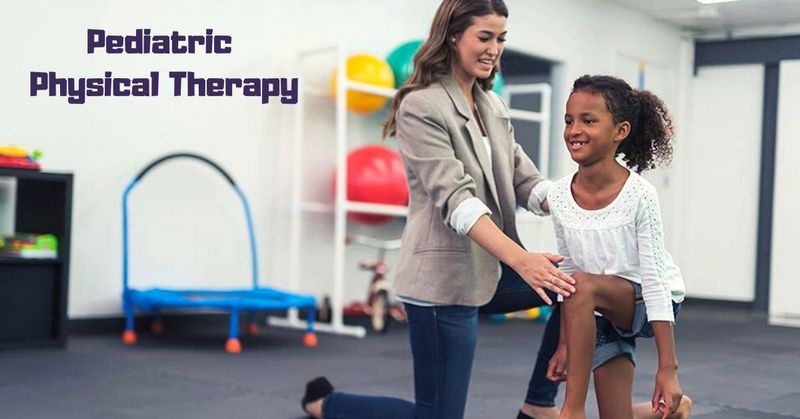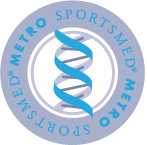Pediatric Physical Therapy

Pediatric physical therapy (physiotherapy) is a branch of modern medicine that receives undeservedly little attention. It is one of the safest and most gentle methods among all possible methods of treatment and prevention of diseases. That is why physiotherapy procedures are especially often prescribed for kids.
What is physical therapy?
Physiotherapy is the effect on the body with the help of various physical factors – both natural and artificially created. These factors include phenomena such as magnetic fields, currents, ultraviolet radiation, light, heat, air, ultrasound, and many others. All these methods of exposure are relatively harmless in comparison, say, with drug therapy and they help the body activate its own healing mechanisms. Physiotherapy can be both the main method of treatment for certain diseases, and an additional element of the main course of treatment. Physical therapy for children is used more often than in adults since the child’s body is more sensitive and requires careful intervention.
Due to what the therapeutic effect is achieved?
The therapeutic effect of physiotherapy is determined by the activation of certain receptor fields in the body, which in turn stimulates the healing process. Various physical factors mentioned above are capable of generating specific processes in tissues and organs. Depending on the area of the lesion and on the purpose of the physiotherapeutic procedures (treatment, prevention or rehabilitation), a strictly defined course is prescribed for each patient, which determines not only the number of procedures but also the area and intensity of exposure. This takes into account the individual characteristics of the human body, contraindications, and other possible side effects. By the way, the side effects of physical therapy are extremely rare and can only be due to the unprofessional nature of the physiotherapist and pediatrician.
Types of physiotherapy procedures
Physiotherapy treatment methods are extremely diverse but they are all divided into two main categories – hardware methods and methods using natural physical factors. Let’s consider each of these categories in more detail.
Water procedures (balneotherapy and thalassotherapy), mud therapy (pelotherapy), heat therapy, motor and respiratory gymnastics, massage and massage-like techniques, air (heliotherapy) and sunbaths are the most natural methods in physiotherapy.
Types of apparatus physical therapy include electrotherapy, magnetotherapy, and phototherapy. Electrotherapy is divided into procedures depending on the type of exposure selected – direct currents of low voltage, alternating currents, electric field. Magnetotherapy can be of two types – variable low-frequency and high-frequency. The main types of phototherapy use infrared, ultraviolet and visible radiation (color therapy). Let us consider in more detail some types of hardware physiotherapeutic procedures:
- Low-frequency pulsed electrotherapy has an effect on sinusoidal modulated currents of low frequency. Such currents stimulate the muscles and nerves, which is especially useful for improving the state of the muscular system, restoring sick or damaged nerve fibers, and also for losing weight. The procedure helps to improve metabolic processes – this determines its effect;
- UHF, or inductothermy, is the action of an ultra-high frequency electromagnetic field. The peculiarity of the effect is that it easily penetrates through all the tissues of the body, warming them, improving blood circulation and providing an anti-inflammatory, decongestant, analgesic, antispasmodic effect. UHF helps improve the functioning of the immune system, helping it fight pathogenic microorganisms. UHF procedures are indicated for inflammatory diseases of the musculoskeletal system, respiratory organs, acute inflammatory processes of the skin, and diseases of the peripheral nervous system;
- Infrared phototherapy is an effect that penetrates tissues to a depth of 2-3 cm, stimulating the self-healing of damaged tissues, relieving cramping and pain, and improving tissue metabolism. Infrared phototherapy is indicated for diseases such as bronchitis, pneumonia, arthritis, neuritis and others. Phototherapy with ultraviolet radiation is used for increased vascular permeability, bone demineralization, with caries and rickets in children;
- Darsonval – a procedure for influencing the body by pulsed alternating currents of high frequency and voltage. Darsonval is usually used for local influences that irritate the nerve receptors of the skin and mucous membranes. Indications for use: diseases of ENT organs, some dental diseases, psoriasis, dermatoses, vascular diseases.
So, physiotherapeutic procedures treat colds and skin diseases, diseases of the musculoskeletal system, gastrointestinal tract, nervous and cardiovascular systems. Many physiotherapeutic procedures are also widely used not only in treatment but also in rehabilitation after serious illnesses, as well as in the prevention of diseases of the spine and respiratory system.
Contraindications to physical therapy for kids
Contraindications to physical therapy can be absolute and relative.
Absolute contraindications:
- fever;
- severe intoxication;
- blood diseases;
- severe disturbances in the function of organs and systems of the body (respiratory failure, cardiovascular failure, etc.);
- mental illness;
- oncological diseases;
- epilepsy;
- cachexia;
- state of alcohol and drug intoxication.
Relative contraindications:
- systemic blood diseases;
- pregnancy;
- emergency conditions for infections;
- acute period of certain diseases (heart attack, stroke);
- the presence of metal objects in the affected area;
- the presence of an artificial heart rate driver (pacemaker);
- individual intolerance to the impact of a particular physical factor.
Physical therapy at home
Most physiotherapeutic procedures using natural physical factors can be carried out at home, as well as some hardware-based physiotherapy methods using modern, compact equipment.
Massage is the most common procedure. Massage helps strengthen weakened children and cope with specific diseases. From the age of 1.5 months, a healthy child can already have a general massage and therapeutic exercises (strictly on the recommendation of a doctor). Depending on the deviations, the child may be prescribed massage of a certain part of the body – for example, massage of the head, legs, back, feet, etc.
For infants, massage will help to avoid digestive problems, regular colds, strengthen the musculoskeletal system, improve metabolism and normalize sleep. At a more mature age, massage will help to cope with diseases such as cerebral palsy, malnutrition, rickets, constipation and problems with the spine. The best option is to do massage for children in a specially equipped children’s clinic. Parents can also perform some methods of baby massage at home – but only the simplest ones and only after appropriate training.
